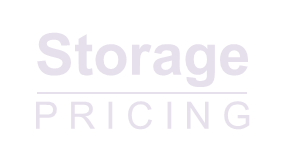Pittsburgh-based storage startup Avere Systems today unveiled a new appliance that employs RAM, solid-state drives (SSDs) and Serial Attached SCSI hard drives to sling files across the data center faster. Dubbed the Avere FXT 3800, the filer offers automated tiering across system memory, SSDs and traditional hard disks. Data placement is determined by current levels of activity.
The system dynamically places hot files in speedier forms of data storage like RAM and SSDs while aging files get transferred in the background to slower components, notably the system’s hard drive. The result, says Avere, is a system that performs 40 faster on SPECsfs2008 NFS benchmark tests than its predecessor, the FXT 3500.
Billed as a more cost-effective alternative to all-flash systems by the NAS optimization vendor, the Avere’s FXT 3800 Edge filer combines 7.8 TB of SAS hard drive capacity (10K RPM) with 800 GB of SSD storage, 144 GB of DRAM and 2 GB of Non-volatile random-access memory (NVRAM) — the type that keeps its data even after it is powered down.
Network connectivity is provided by two 10 GbE ports and six 1 GbE ports. In a clustered implementation, the FXT can scale up to 50 nodes.
“The performance gains and cost benefits associated with our latest FXT Edge filer demonstrate the massive advantages of a hybrid approach that can precisely match the storage media to the data being accessed,” said Ron Bianchini, President and CEO of Avere Systems. “And when deployed as part of our edge-core architecture, it also delivers the flexibility businesses need to locate storage where it makes most sense for the business.
Avere’s approach to NAS systems should appeal to enterprise IT managers that are mulling their storage options, claims Neuralytix analyst Benjamin Woo.
“With the new FXT 3800, Avere continues to be on the cutting edge of file system storage innovation and gives companies a new way to think about the way they purchase data storage. Customers can now receive the greatest amount of flexibility and choice by leveraging all four media tiers of storage, while defining the performance and efficiency requirements based on the activity of the data,” said Woo in a press remarks.
For Avere Systems CEO Ron Bianchini, SSDs, RAM and even traditional disk-based storage all have a place in today’s performance-obsessed enterprise storage market.
“The performance gains and cost benefits associated with our latest FXT Edge filer demonstrate the massive advantages of a hybrid approach that can precisely match the storage media to the data being accessed. And when deployed as part of our edge-core architecture, it also delivers the flexibility businesses need to locate storage where it makes most sense for the business,” said Bianchini in a statement.
Avere FXT 3800 plans to start selling the FXT 3800 within 30 days. Prices start at $112,500.

 There’s no way around it – we’re in the midst of a data explosion – an explosion many small businesses are struggling to keep up with, without ever-increasing budgets. By eliminating redundancies, organizations can maximize their storage capacity and see immediate results. However, such technology has previously been out of reach for growing businesses. We’re pleased to announce the wait is over – today we announced the new Dell DR4000 Storage Platform which combines the performance and reliability of disk-based backup with innovative deduplication and compression capabilities from Dell’s Ocarina Networks acquisition. Virtual tape library (VTL) pricing and cost are decreasing.
There’s no way around it – we’re in the midst of a data explosion – an explosion many small businesses are struggling to keep up with, without ever-increasing budgets. By eliminating redundancies, organizations can maximize their storage capacity and see immediate results. However, such technology has previously been out of reach for growing businesses. We’re pleased to announce the wait is over – today we announced the new Dell DR4000 Storage Platform which combines the performance and reliability of disk-based backup with innovative deduplication and compression capabilities from Dell’s Ocarina Networks acquisition. Virtual tape library (VTL) pricing and cost are decreasing.